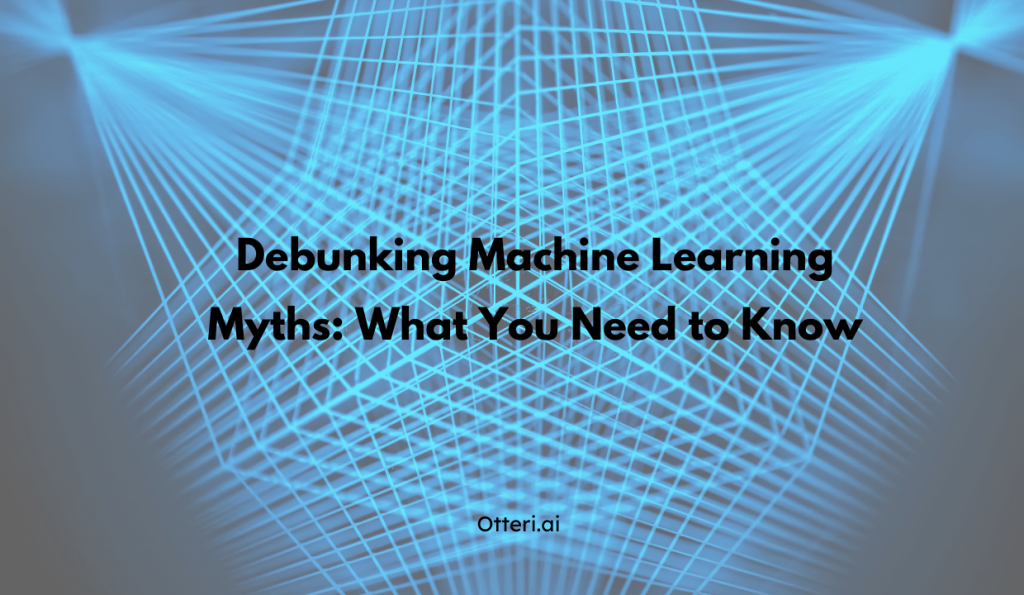
Discover common misconceptions about machine learning and learn the truth behind this powerful technology. Uncover what is NOT true about machine learning in this informative guide.
Artificial intelligence (AI) has taken the world by storm, transforming industries from healthcare to finance. However, many myths and misconceptions persist about what AI, including machine learning, can and cannot do. In this article, we’ll uncover common misunderstandings, highlight what is not true about AI, and provide clarity on how it truly works.
Machine Learning and Artificial Intelligence Are Not the Same
Many people use the terms machine learning and artificial intelligence interchangeably, but they are not the same. Artificial intelligence is a broad field that encompasses various techniques, including machine learning. Machine learning is a subset of AI that focuses on algorithms and statistical models to enable computers to learn from data without being explicitly programmed. AI, on the other hand, includes rule-based systems, robotics, and symbolic reasoning.
Reality: Machine learning is a subset of AI, but AI is not limited to machine learning.
AI Requires Data to Function
Some believe that AI models can function independently of data, but this is far from the truth. AI relies on large datasets to identify patterns, make predictions, and improve performance over time. Without data, an AI model cannot learn or function effectively.
Reality: Data is the foundation of AI. Without quality data, models cannot generate accurate predictions.
Data Quality Matters More Than Quantity
While it’s true that AI models improve with more data, quantity does not always mean quality. If the data is noisy, biased, or irrelevant, it can lead to poor model performance. The key is to have high-quality, well-labeled data that is representative of real-world scenarios.
Reality: More data can improve a model, but only if it is clean, relevant, and unbiased.
AI Enhances Human Capabilities Rather Than Replacing Them
One of the most common fears is that AI will take over jobs and make human workers obsolete. While it can automate repetitive tasks, it lacks human creativity, emotional intelligence, and critical thinking. Instead of replacing humans, AI enhances human capabilities, helping professionals make better decisions and increasing efficiency.
Reality: AI is a tool to assist humans, not replace them.
AI Models Are Not Always Accurate
Another widespread misconception is that AI models always deliver accurate results. In reality, models are only as good as the data they are trained on. Bias, poor data quality, or incorrect assumptions can lead to inaccurate predictions. Continuous evaluation and fine-tuning are necessary to maintain accuracy.
Reality: AI models require regular monitoring and adjustments.
AI Is Accessible to Businesses of All Sizes
Many assume that AI is only accessible to big tech firms. However, with the rise of cloud computing, open-source libraries, and automated AI platforms, businesses of all sizes can leverage it to gain insights, improve operations, and drive innovation.
Reality: Small businesses and startups can also benefit from AI with accessible tools and platforms.
Human Oversight Is Essential in AI
Some believe that once an AI model is built, it can continuously learn without human supervision. While models can improve with new data, they still require human oversight for tuning, retraining, and debugging. Additionally, ethical considerations such as bias and fairness must be addressed by humans.
Reality: Human intervention is essential for training, monitoring, and maintaining AI models.
AI is becoming more user-friendly.
Although AI involves complex algorithms, recent advancements in automated tools have made it more accessible to non-technical users. Platforms like Otteri.ai simplify AI processes, allowing users to implement AI-driven solutions without needing deep technical expertise.
Reality: With the right tools, even non-technical users can leverage AI.
AI Is Used for More Than Just Predictions
While predictions are a significant part of AI, the technology also involves classification, clustering, anomaly detection, and reinforcement learning. AI is not just about forecasting trends but also about uncovering insights, detecting fraud, optimizing processes, and much more.
Reality: AI has a wide range of applications beyond just predictions.
AI Models Can Contain Bias
Many believe that AI models are purely objective. However, they learn from data, which can contain biases. If the training data is biased, the model’s predictions will also be biased. That’s why it’s crucial to ensure fairness and transparency in AI development.
Reality: AI models can inherit biases from training data, requiring careful monitoring and mitigation strategies.
Conclusion
AI is a powerful tool that is transforming industries, but it is often misunderstood. By debunking these myths, we can better understand its capabilities and limitations. Whether you’re a business owner, developer, or enthusiast, knowing the truth about AI helps you make informed decisions.
At Otteri.ai, we empower businesses with advanced AI-driven solutions tailored to their needs. From automation to data analysis, our platform makes AI accessible and easy to use. Get started today and unlock the full potential of AI for your business!